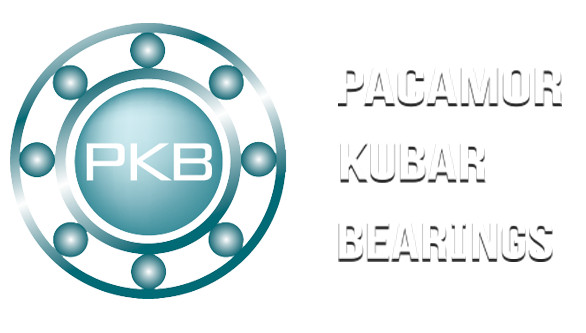At Pacamor Kubar Bearings (PKB), we manufacture the vast majority of our miniature and instrument ball bearing rings from AISI 440C stainless steel, which is the standard material for most domestically manufactured miniature and instrument bearings for aerospace and medical applications. We also provide specially heat treated 440C for cryogenic applications or other extreme environments and occasionally manufacture ball bearings from other specialty steels.
There are some cases where customers ask for AISI 52100, a steel used in the bearing industry for many years but, in most cases has been replaced by 440C on newer drawing revisions and in new applications. The purpose of this blog is to offer some information about 440C as compared to 52100, particularly in corrosive environments.
According to “A Comparison of the Performance of AISI 52100 and AISI 440C Ball Bearings in a Corrosive Environment” Squires & Radcliffe, Central Energy Generating Board (CEGB-UK) Scientific Services & CEGB Berkeley Nuclear Laboratories, the results show that 440C stainless steel resists corrosion twice as well as conventional 52100 steel.
CEGB performed tests on 150 bearings made from En31 (AISI 52100) and AISI 440C materials and published their results in the Journal of Materials Science. “The clear conclusions were that the stainless steel bearings performed twice as well as the standard En31 bearings in terms of fatigue life, as well as being far superior both for corrosion resistance and for un-lubricated running.”
CEGB’s experiments compared the performance of AISI 52100 ball bearing steel and AISI 440C stainless steel. The bearings made from AISI 52100 had been suffering from corrosion damage in the application. The test atmosphere was moist carbon dioxide at a pressure of about 3 MPa, and bearings were deliberately contaminated with a representative amount of sodium chloride. The objective of the tests was to compare the rolling-contact fatigue performance of the materials and to look for other failure mechanisms in the ball bearings. Failure rates were found to be between 1 and 2 times more than would have been expected under ideal conditions. The failure mechanism was primarily identified as rolling contact fatigue. Results were analyzed statistically by assuming that failures fitted an exponential distribution, and it was shown that the stainless bearings performed more than twice as well as those made from conventional steels.
Some key points from the Journal of Materials Science article are provided here:
Lubricated Beaings – “During routine maintenance, superficial corrosion was discovered on certain ball bearings removed from components operating inside the pressure vessel of a CEGB nuclear power station. These bearings were grease lubricated, made from conventional En31 or AISI 52100 type steels, and compatible with their location in a relatively cool region of the reactor. It appeared likely that condensation of water on or near the bearings during moisture level executions had caused the corrosion, perhaps enhanced by the presence of chloride ions of uncertain origin. Although no operational problems had occurred, it was thought prudent to examine ways of preventing further corrosion.
One of the possible options was to replace the bearings with similar components manufactured from a corrosion-resistant steel such as AISI-440C. Whilst it was known that this would prevent the corrosion it was thought possible that the fatigue properties might be inferior. A search of the literature revealed no adequate comparative fatigue data even in air. In addition it was not clear whether, in the presence of chloride and of moisture, AISI 440C might be more susceptible to non-fatigue processes such a s stress corrosion cracking or hydrogen embrittlement.
Metallurgy – …A metallographic examination of unused bearings showed that the structures of the steels were fundamentally similar, being a matrix of tempered martensite containing chromium carbides.
Non-lubricated (Dry) Bearings – …As an additional check on the performance of bearings with no effective lubricant, un-lubricated bearings were run in two tests; the results were slightly unexpected in that the En31 bearings performed very badly, but stainless bearings performed quite well.
Failure Analysis – …About 150 rolling element bearings in conventional En31 and stainless AISI440C steels have been testing in a rolling-contact fatigue rig. The conditions simulated the temperature and gas pressure in a particular reactor, and the grease lubricant was artificially contaminated with sodium chloride. The dominant failure mode involved rolling-contact fatigue, and both materials had lives considerably below the classical expectations.
The reduction is thought to be an environmental effect related to the chloride and moisture levels, and more experimental work would be required to explain the various results. However the clear conclusions were that the stainless steel bearings performed twice as well as the standard En31 bearings in terms of fatigue life, as well as being far superior both for corrosion resistance and for un-lubricated running.”
Pacamor Kubar Bearings (PKB) – PKB AISI 440C ball bearings are found in dental and surgical handpieces, bone saws and drills, and fluid pumps for the medical industry. PKB produces 440C EMQ (electric motor quality) bearings for miniature motors, actuators, and electrical sub assemblies for robotic applications such as pick and place robots and packaging equipment. PKB 440C DFARS-approved instrument bearings are used in guidance and missile applications as well as specialty products produced for rocket booster components. PKB manufactures miniature and instrument ball bearings up to approximately 1.125″ Outside Diameter (28.57mm). Engineering assistance is available to help recommend or design a bearing for precision miniature applications. Please contact sales@pacamor.com






